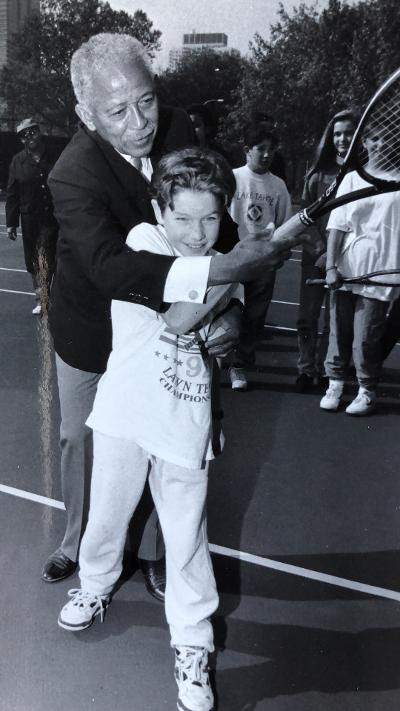Thursday, November 26, 2020 – THE CHARMING MANSION THAT IS NEW A JEWELRY STORE


THURSDAY, NOVEMBER 26th, 2020
The
220th Edition
From Our Archives
THE PLANT MANSION
TURNS INTO A JEWEL
A Gilded Age mansion traded for a pearl necklace
November 23, 2020
from EPHEMERAL NEW YORK (C)
In 1905, Fifth Avenue gained a new mansion. Businessman and baseball team owner Morton F. Plant, the son of a railroad, steamship, and hotel baron, commissioned a marble and limestone showstopper at the southeast corner of 52nd Street.

When Plant moved in to the five-story Italian Renaissance-inspired mansion facing 52nd Street (above and below left) with his first wife, Nellie, he should have felt satisfied with his decision to build it here.

After all, his neighbors were among the wealthiest New Yorkers, including several Vanderbilts, who occupied their own mansions across the street. (Plant bought the land from William K. Vanderbilt; previously it was the site of an orphan asylum, according to a 2019 Bloomberg article by Jack Forster.)
Within a few years, though, Plant apparently realized he’d made a mistake.
An increasing number of businesses were creeping up to his stretch of Fifth Avenue (like the St. Regis Hotel and Gotham Hotels at 55th Street), ruining the exclusive, residential vibe.

One of those new Fifth Avenue businesses was the American outpost for Cartier, the French jewelers. In 1909, Pierre Cartier launched his first store at 712 Fifth Avenue, near 56th Street, wrote Christopher Gray in The New York Times in 2001.

Business was good for Cartier, which organized workshops in the city to meet the demand for their jewelry, states Forster. (Selling the Hope diamond in 1910 also helped from a PR standpoint, raising the jeweler’s Manhattan profile.)
But back to Plant (at right) and his mansion, which was increasingly out of character on a more commercialized Fifth Avenue. In 1914 he’d remarried a much younger woman, Maisie (above center). The two found themselves left behind as neighbors moved away and businesses replaced them.

“By 1917, life on Fifth Avenue and 52nd Street (at left, in 1900) had long since become untenable for Plant,” wrote Forster. “The ongoing encroachment of businesses, combined with the removal of virtually all the families who’d once colonized the Avenue below Central Park to new addresses north of 59th Street, had left the Plants isolated both physically and socially. Plant had already begun work, the year before, on a new and even bigger residence, on 86th Street and Fifth Avenue (below right).”

Paying for two Fifth Avenue mansions, however, was quite costly, even for a scion of wealth. But then, Maisie caught a look at a Cartier pearl necklace. “It’s really two necklaces: a double strand of enormous, natural South Sea pearls; the smaller is a strand of 55 pearls and the larger, of 73,” wrote Forster. The necklace’s value: $1 million.
“When Maisie Plant fell in love with the natural, oriental pearl necklace, Pierre Cartier sensed an opportunity,” states a 2016 article by Business Insider. “Pierre, the savvy businessman, proposed the deal of a lifetime: He offered to trade the double-strand necklace of the rare pearls —and $100—for the Plants’ New York City home.” (The house was assessed at $925,000.)

In July 1917, an article appeared in the Real Estate Record and Guide announcing the sale of the Plant mansion on 52nd Street to Cartier for “$100 and other valuable considerations,” according to Forster. (At left, in 1975)
It’s an unusual deal, but definitely a win-win. Plant unloaded his first mansion by trading it in to Cartier for a necklace his wife desired, then moved uptown in a more luxurious house on the city’s new Millionaires’ Mile. (Cartier also absorbed the elegant residence next door at 4 East 52nd Street, the Holbrook House.)

Cartier has occupied Plant’s mansion on 52nd Street ever since. The exterior looks very much the same as it did in Plank’s day, though the interior has been altered somewhat.

I tried to get in to take a look around but the line to enter was too long; I’d forgotten it’s jewelry-buying season—when Cartier wraps the building up in a big red bow to celebrate the holidays.
But I did spot this modest plaque marking the mansion’s past as a short-lived residence built on a street destined to become a commercial corridor.

Morton Plant died in 1918, shortly after moving into his 86th Street mansion. When Maisie passed away in 1957, the mansion was bulldozed and her pearls went to auction, where they were sold for $181,000.
Where are they today? No one knows. But a portrait of Maisie wearing them (above portrait) hangs in the Cartier store today, wrote Forster.
THURSDAY PHOTO OF THE DAY
SEND YOUR SUBMISSION TO:
ROOSEVELTISLANDHISTORY@GMAIL.COM

WEDNESDAY PHOTO OF THE DAY
Battery Park
Willa Klein guessed correctly

These photos came from Gloria Herman, when remembering David Dinkins
Text by Judith Berdy
Thanks to Bobbie Slonevsky for her dedication to Blackwell’s Almanac and the RIHS
Thanks to Deborah Dorff for maintaining our website
Edited by Melanie Colter and Deborah Dorff
All image are copyrighted (c)
EPHEMERAL NEW YORK (C)
FUNDING PROVIDED BY ROOSEVELT ISLAND OPERATING CORPORATION PUBLIC PURPOSE GRANTS CITY COUNCIL REPRESENTATIVE BEN KALLOS DISCRETIONARY FUNDING THRU DYCD
FREE COVID TESTING
NYC HEALTH + HOSPITALS METROPOLITAN HOSPITAL
WALK IN COVID-19 TESTING
1901 First Avenue, New York, NY 10029
at 97th Street
call (844) 692-4692
9AM-3:30PM Daily
Free Diagnostic Testing (Third-party Verified)
Screening Required
No appointment needed


Copyright © 2020 Roosevelt Island Historical Society, All rights reserved.
Our mailing address is:
rooseveltislandhistory@gmail.com



Leave a comment